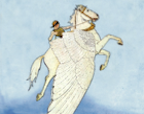| No. | Title | Contributors | Date | Type | Comments | Date last comment |
 |
NKOSIYABO DUBE. Investigating your natural surroundings – ecosystems, animals and plants |
Tutor_LarsFri (2 Contributions) |
2016-08-08 | 2 | 2016-08-09 | |
| The task is to learn about the nature around you, knowing some of the key species and life forms, and being able to explain how these depend on each other and whether special measures should be taken to protect this nature. | ||||||
| Details about the contribution from Tutor_LarsFri: | ||||||
| Murgwi Estate Case Study Murgwi Estate is situated under Shamva District in the Mashonaland Central Province of Zimbabwe. The Park is approximately 72km². It is located along Harare- Shamva road about 80 km north-east of Harare. It is a mountainous area with fertile soils. Within the area there is a game park with gum tree plantation covering about quarter of the total area of the Estate. One fifth of the area is arable land. The rest of the area is covered with natural vegetation with a small fraction occupied by buildings. In my case study I chose the mountainous southern part of Murgwi Park. During my investigation in the area I was welcomed by a group of wild pigs which quickly disappeared into the mountain. A troop of baboons roamed the foot of the mountain, some carrying small babies under their stomachs while some jumped from one tree to another enjoying themselves. Three Giraffes also showed themselves with their fascinating movement. They were just enjoying the tree leaves and moving from tree to tree picking few leaves. Mr. Vhiri a local hunter, who had escorted me during my adventurer study escapade, asked me to keep quiet such that we watch the action in the area. After30 minutes of quiet watching I saw a group of impalas which I could not count, since I wanted to maintain quietness, we stayed put while enjoying nature. In about 45 minutes of watching a zebra passed through in a high speed of which we all did not know why it was running. In an hour’s time we extended our focus to the small animals and insects around the area. This became more fascinating as we could see around us bee hives with swarms of bees coming in and out. In some hives it seemed that honey had been harvested in few past days, as the remains from the harvest were still scattered around the area. Lizards were running in and outside the cracks of the rocks fetching in some honeycomb residues. As if that was not enough we peeped into a small cave and we saw a big snake which heaped itself with flies hovering over it. We left it undisturbed and continued with our investigation. We moved northwards. At this moment something terrible almost happened. I came face to face with a very big snake that rolled itself around a log which was just 30cm away from me. I was shocked by a heavy sound in front and when I glanced I saw a big snake that fell down almost ready to run away. I could imagine if it had then decided to strike on me. The area was a home of a variety of insects most of them I did not know or had not seen before. The rocks in the area seem to be the habitat for many creatures and there are plants growing on top of the rocks. The types of the rocks in the area are metamorphic rocks. Abrasion is also creating some stylish surfaces on the rocks. The holes on the rocks form pot holes accommodating water where birds and other living organisms depend on. During my investigation, I came to realize that plants and animals depend on each other in quite a number of ways. Animals find food, shelter and defense from their predators. These animals also in return provide fertilizers in a form of animal dung and urine. The most important things regarding the flora and fauna in this case study was the symbiotic living where life dependents on each other equally the same. In short, it is the ecosystems where animals provide carbon dioxide to help plants in the process of photosynthesis, in which plants manufacture their own food as in return animals get oxygen and food from the plants. During my investigation I could see a lot of dead leaves under the trees. When I moved some top dead leaves in the humus I saw some caterpillars, millipedes and worms and more small insects living under the dead leaves. In my opinion I think the neighbouring communities should be educated about the importance of nature in our lives. Security rules to protect the area should be put in place, and the government, also need to support on the efforts put by those running Murgwi Estate. . |
Duration: 0 Minutes |
|||||
| File size: 81.43kb |
||||||
| Filename: 133_Nkosiyabo_Dube.pdf |
||||||
| Number of Downloads: 14 |
||||||

Digital Showroom

|
|
| GO TO TOP |